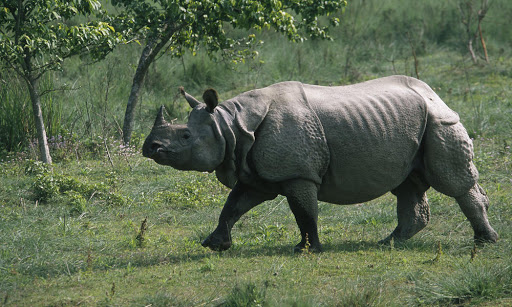UPSC Articles
Parasitic Infections found in One-Horned Rhinoceros
Part of: GS Prelims and GS-III – Environment; Biodiversity
In news
- Recently, the World Wildlife Fund (WWF) India has published report – ‘Prevalence of Endoparasitic Infections in Free-Ranging Greater One-Horned Rhinoceros’ for Assam and West Bengal.
Key takeaways
- The report highlights the natural causes due to which these rhinos die along with poaching. These natural causes have not been studied in great detail yet.
- Since 2017, the Rhino Task Force of Assam and WWF India have been undertaking steps to study pathogens found in fresh rhino dung samples in Assam, Uttar Pradesh, and West Bengal.
- According to the researchers, habitat degradation can lead to an increased exposure to pathogens
- From the samples from Assam and West Bengal, the study concluded that parasites from four genera were present in an estimated 68% of India’s rhino population.
- The overall prevalence of endoparasites was 58.57% in Assam and 88.46% in West Bengal.
- Results from UP are pending.
Do you know?
- Endoparasites are parasites that live in the tissues and organs of their hosts, such as tapeworms, flukes, and protozoans of vertebrates.
Important value additions
- There are three species of rhino in Asia — Greater one-horned, Javan and Sumatran.
- Two greatest threats: Poaching for the horns and habitat loss
- The five rhino range nations: India, Bhutan, Nepal, Indonesia and Malaysia.
- These Nations have signed a declaration ‘The New Delhi Declaration on Asian Rhinos 2019’ for the conservation and protection of the species.
Protection Status
- IUCN Red List
-
- Javan and Sumatran Rhino: Critically endangered
- Greater one-horned rhino: vulnerable
- All three listed under Appendix I (CITES).
- Greater one-horned rhino: Schedule I of the Wildlife Protection Act, 1972.
- In India, rhinos are mainly found in Kaziranga National Park (NP), Pobitora Wildlife Sanctuary (WLS), Orang NP and Manas NP in Assam, Jaldapara NP and Gorumara NP in West Bengal and Dudhwa Tiger Reserve in UP.
Conservation Efforts by India
- Recently, the Ministry of Environment Forest and Climate Change (MoEFCC) has begun a project to create DNA profiles of all rhinos in the country.
- National Rhino Conservation Strategy: It was launched in 2019 to conserve the greater one-horned rhinoceros.
- Indian Rhino Vision 2020: It was launched in 2005. Aim: To attain a wild population of at least 3,000 greater one-horned rhinos spread over seven protected areas in the Indian state of Assam by the year 2020.
















